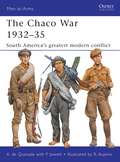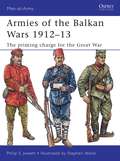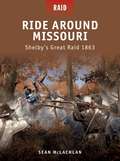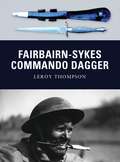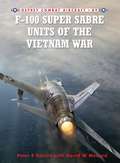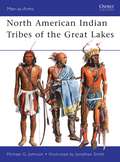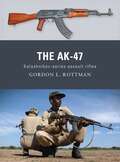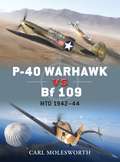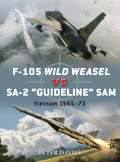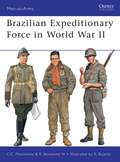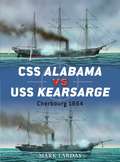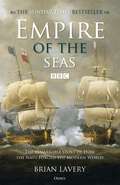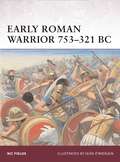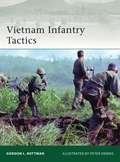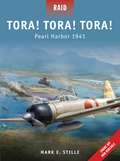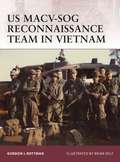- Table View
- List View
Small-Scale Armour Modelling (Modelling Masterclass Ser.)
by Alex ClarkSince the mid-1990s, small-scale armour modelling has seen a great resurgence in popularity, mostly due to model manufacturers in Germany and the many smaller companies that have started selling add-ons and accessories. Using a highly visual, step-by-step approach, this book covers all of the major aspects of small-scale armour modeling, including construction, painting, finishing and presentation. Covering World War II armour, modern vehicles and everything in-between, this book is the ultimate guide for those who appreciate the beauty and craftsmanship of small-scale armour models.
The Chaco War 1932–35: South America’s greatest modern conflict (Men-at-Arms)
by Ramiro Bujeiro Alejandro De QuesadaThe Chaco War was massive territorial war between Bolivia and Paraguay, which cost almost a 100,000 lives. An old fashioned territorial dispute, the contested area was the Gran Chaco Boreal, a 100,000-square mile region of swamp, jungle and pampas with isolated fortified towns. The wilderness terrain made operations difficult and costly as the war see-sawed between the two sides. Bolivian troops, under the command of a German general, Hans von Kundt, had early successes, but these stalled in the face of a massive mobilization programme by the Paraguans which saw their force increase in size ten-fold to 60,000 men. This book sheds light on a vicious territorial war that waged in the jungles and swamps of the Gran Chaco and is illustrated with rare photographs and especially commissioned artwork.
Armies of the Balkan Wars 1912–13: The priming charge for the Great War (Men-at-Arms)
by Stephen Walsh Philip JowettIn 1912, the Balkan states formed an alliance in an effort to break free from the crumbling Ottoman Empire. Forming an army of some 645,000 troops from Greece, Bulgaria, Serbia and Montenego, they took on a force of 400,000 Turkish soldiers. Both sides were equipped with the latest weapons technology. This book looks at the diverse and sometimes colourful uniforms worn by both sides, paying special attention to insignia, weapons and equipment. It also gives an overview of the campaigns that became a 'priming pan' of World War I.
French Foreign Légionnaire 1890–1914 (Warrior #157)
by Martin Windrow Peter DennisAs France emerged from the Franco-Prussian War she embarked on a period of active colonialism, acquiring territories in South-East Asia and Africa. By the turn of the century much of north, west and central Africa was under French control. In order to police all of these territories, the French needed an army and so the French Foreign Legion was born. In this book, world-renowned Legion expert Martin Windrow analyses what it would have been like to be a member of the French Foreign Legion and how the experience, equipment, tactics and training of the Legion developed in the 80 years between their foundation and the outbreak of the First World War. He investigates their glory years in North Africa and Indochina, and draws extensively on memoirs from two British legionnaires, peppering the text with extraordinary first-hand accounts of the French Foreign Legion.
The Last Boarding Party: The USMC and the SS Mayaguez 1975 (Raid)
by Steve Noon Clayton Chun Mariusz Kozik Alan GillilandJust two weeks after the close of the Vietnam War, communist Cambodian Khmer Rouge elements seized the S.S. Mayaguez in international waters. Believing they had to act quickly, United States Marines boarded the ship, only to find the crew had been removed. They then launched an assault on a nearby island where they believed the crew had been taken. Instead of a quick strike against a limited foe, the Marines encountered major opposition and were quickly pinned down. With large numbers of Cambodians closing in all around, the a desperate firefight developed as US forces tried to extract the Marines. This book recounts the bloody struggle on Koh Tang island, as a badly botched hostage rescue turned into a desperate evacuation.
Ride Around Missouri: Shelby’s Great Raid 1863 (Raid)
by Johnny Shumate Mariusz Kozik Donato Spedaliere Sean McLachlanIn July 1863, with the Confederacy still reeling from the defeats at Vicksburg and Gettysburg, Union forces pushed deep into Arkansas, capturing the capital of Little Rock. In response, Colonel Joseph O. Shelby launched a daring raid to disrupt the advance. Taking 600 men and a section of light artillery, he slipped behind enemy lines. Moving by night to confuse the enemy, Shelby captured a series of small outposts, collecting weapons and recruits as he went. As they continued their ride, the rebels tore up railroad tracks, burned bridges, and cut telegraph lines. Despite these successes, the Union troops slowly closed in on the raiders. Shelby fought a series of bitter skirmishes, until he found himself surrounded. Unwilling to surrender, Shelby led a charge through the Federal lines, bursting out into the open country and onto the road back to the Confederacy. While the results of this raid are still debated by historians, no one has ever doubted its boldness, and west of the Mississippi it became common to boast, "You've heard of Jeb Stuart's ride around McClellan? Hell, brother, Jo Shelby rode around MISSOURI!†?
Fairbairn-Sykes Commando Dagger (Weapon)
by Howard Gerrard Leroy ThompsonThe Fairbairn-Sykes Commando dagger has become iconic as the most widely recognized fighting knife in the world. The origins of the dagger can be traced to Shanghai in the 1930s where W. E. Fairbairn and US Marine officers including Sam Yeaton carried out experiments to develop what they considered the perfect knife for close combat. When Fairbairn and Sykes became instructors for the Commandos, they refined the design which would evolve into the classic Fairbairn-Sykes dagger. The dagger was first used during early Commando raids into occupied Europe but saw action in every theatre of World War II. US Rangers and Marines who had trained with the Commandos took their Fairbairn-Sykes daggers home, and this also influenced the development of American Special Forces daggers. The Fairbairn-Sykes remained in use with many units after the war. It has become a symbol of Commando and special forces units throughout the world.
The Colt 1911 Pistol (Weapon)
by Peter Dennis Leroy Thompson Alan GillilandFirst used in combat during the Punitive Expedition into Mexico and then extensively during the world wars, the Colt Government Model (1911) pistol remained the standard issue handgun in the US armed forces for nearly 80 years and has continued in service with some units to this day. In fact, the M1911 has seen a resurgence amongst US Special Operations units as US Marine MARSOC and MEUSOC personnel are issued current generation 1911-type pistols. In addition the pistol has seen service with famous law enforcement agencies such as the Shanghai Municipal Police, LAPD Swat and Texas Rangers. Nearly a century after its introduction, the M1911 pistol remains a popular design and is now produced by virtually every major firearms manufacturer doing business in the USA.
MiG-3 Aces of World War 2 (Aircraft of the Aces)
by Dmitriy Khazanov Andrey YurgensonThe MiG-1/3 family of fighters was built to satisfy a Soviet Air Force requirement for an advanced, fast, high-altitude fighter. Entering service in the spring of 1941, the problematic MiG-1 had its handling issues rectified with the hasty production of the MiG-3. Many of these were destroyed on the ground when the Germans launched Operation Barbarossa. Nevertheless, enough examples survived to allow pilots such as Stepan Suprun and Aleksandr Pokryshkin to claim a number of victories in the type. This book tells the complete story of the men who made ace in the first examples of the famous MiG fighter.
AV-8B Harrier II Units of Operations Desert Shield and Desert Storm (Combat Aircraft)
by Jim Laurier Lon NordeenThe AV-8B is the only tactical aircraft that can deploy with Marine forces on amphibious assault ships and provide air cover and close air support separate from large deck aircraft carriers. When Iraq invaded Kuwait in August 1990, a coalition of nations launched Operation Desert Shield in order to defend Saudi Arabia, and the Harrier II was among the first tactical air assets to be deployed to the region. During Operation Desert Storm, the five units flying the AV-8B in-theatre became some of the top tactical squadrons of choice by air mission planners because of the pilots' skill as well as the plane's vertical take-off ability. The previously untold story of the AV-8B in this conflict is vividly brought to life by the author through first-hand accounts and period photography sourced from those that were there and official archives. This will be the first of three volumes on USMC Harrier IIs in combat, with follow-on titles covering the jet's operations in Iraq in 2003–08 and Afghanistan in 2001–2009.
F-100 Super Sabre Units of the Vietnam War (Combat Aircraft)
by Rolando Ugolini David Menard Peter E. DaviesThe F-100 Super Sabre may have been superseded by the superior technology of the F-105 Thunderchief and the F-4 Phantom by the Vietnam War it remained in service. The Super Sabre was deployed as an air defence fighter, and was later given nuclear capability. The F-100's toughness, adaptability and reliability made it ideal for the incessant missions that were demanded by close support and counter-insurgency missions. 242 Super Sabres and 87 aircrew were lost during the war but their role, particularly in developing the tactics used for discovering and destroying SAM sites, was invaluable. This book describes some of the most important actions that the F-100 took part in, looks at the pilots who flew it and analyses the impact of the aircraft on the war.
George Washington: Leadership, Strategy, Conflict (Command)
by Mark Lardas Graham TurnerDespite his lack of formal military training, George Washington may be one of history's must underrated commanders. Building an army virtually from scratch, he defeated the pre-eminent military power of his day. Although, he made mistakes, especially early in the war when he composed over-complicated plans that proved beyond the ability of his army to fulfill, he learned from them. He learned how to utilize the strength of his army and strike where the British were weakest, most notably in his famous surprise attacks on Trenton and Princeton after crossing the Delaware River on Christmas night. However, Washington's true legacy comes from his actions at the end of the war. His ability to walk away from the battlefield, sheath his sword and willingly relinquish the reigns of power made him truly great.
North American Indian Tribes of the Great Lakes (Men-at-Arms)
by Jonathan Smith Michael G JohnsonThis book details the growth of the European Fur trade in North America and how it drew the Native Americans who lived in the Great Lakes region, notably the Huron, Dakota, Sauk and Fox, Miami and Shawnee tribes into the colonial European Wars. During the French and Indian War, the American Revolution, and the War of 1812, these tribes took sides and became important allies of the warring nations. However, slowly the Indians were pushed westward by the encroachment of more settlers. This tension finally culminated in the 1832 Black Hawk's War, which ended with the deportation of many tribes to distant reservations.
The AK-47: Kalashnikov-series assault rifles (Weapon)
by Gordon L. Rottman Johnny Shumate Alan GillilandThe Kalashnikov AK-47 is the most ubiquitous assault rifle in the world, with more AK-47s and its variants in use than any other individual small arm. Created by Senior Sergeant Mikhail Kalashnikov, and first adopted by the USSR soon after World War II, its production continues to this day, with an estimated 75 million produced worldwide. This book takes a look at the complete history of the weapon, discussing its design, development, and usage, taking its story from the great armies of the Soviet Union to the insurgents and criminal gangs that often employ the weapon today.
P-40 Warhawk vs Bf 109: MTO 1942–44 (Duel)
by Jim Laurier Carl Molesworth Gareth HectorAlthough the P-40 and the Bf 109 joined the air war over North Africa at nearly the same time in 1941, the German fighter had already racked up a considerable combat career, dating back to 1937 in Spain. In contrast, the P-40 was a bit of an unknown quantity and was making its combat debut in the hands of the RAF's Desert Air Force. Discover how the huge differences between the veteran Bf 109 and the new P-40 determined the tactics they adopted and the ultimate outcome of their epic confrontation in this new book. The author covers all aspects of the aerial battle, from the small, agile Bf 109's ability to operate more effectively at high altitudes through to the P-40's advantage in manoeuvrability, which outweighed its poor high altitude performance.
F-105 Wild Weasel vs SA-2 ‘Guideline’ SAM: Vietnam 1965–73 (Duel)
by Jim Laurier Gareth Hector Peter E. DaviesThe Vietnam war was the first conflict that saw extensive use of surface-to-air anti-aircraft missiles, and thus became a training ground for the tactics of this new type of battle. This Duel presents this story in the context of two of the main opponents: America's top fighter-bomber and the NVA's best anti-aircraft missile.
La-5/7 vs Fw 190: Eastern Front 1942–45 (Duel)
by Jim Laurier Dmitriy Khazanov Andrey Yurgenson Gareth Hector Aleksander MedvedSoviet fighter aviation suffered terribly at the hands of the Jagdwaffe in the first year of the war in the east and, with the arrival of JG 51 and its Fw 190s on the Stalingrad Front in September 1942, things only got worse. However, help was on its way in the form of the La-5. Tougher, faster, and with a greater rate of climb than its predecessors, most were flow by a new generation of better-trained pilots led by combat veterans. These new fighters soon found themselves pitted into action on the Central Sector against the equally new Fw 190As of JG 51. From then on, these two fighters would battle it out in the skies over the Eastern Front. This book tells the complete story of the battles between these two important fighters.
Brazilian Expeditionary Force in World War II (Men-at-Arms)
by Ramiro Bujeiro Cesar Campiani Maximiano Ricardo Bonalume NetoIn the English-speaking world, it is generally unknown that a volunteer Brazilian Expeditionary Force (FEB) fought alongside the US Army in Italy from mid-1944 until the end of the war. This was in effect a light infantry division, consisting of three infantry regiments augmented with artillery and light armour. It was supported by a Brazilian Air Force contingent of a light reconnaissance squadron as well as a P-47 Thunderbolt-equipped fighter squadron. Although all weapons, uniform, kit and equipment were either American-supplied or American models, there were distinctive Brazilian adaptations to uniforms and other key pieces of kit. This is a seriously researched volume on a little-studied subject matter complete with a range of previously unpublished photographs and specially commissioned artwork plates.
The Pattern 1853 Enfield Rifle (Weapon)
by Peter Dennis Peter SmithurstThe Pattern 1853 Enfield Rifle was the first rifled firearm issued to every soldier in the British Army, and gave the infantry a revolutionary increase in firepower. First issued in 1853, the Enfield proved itself worthy during both the Crimean War and the Indian Mutiny, where its long range, durability, and interchangeable parts made it a perfect campaign rifle. However, it was during the American Civil War that the Enfield saw the greatest use, with over a million rifles being sold to the armies of both the North and South. This title takes an in-depth look at the design, the history, the mechanics, and the use of one of the most important firearms of the 19th century.
CSS Alabama vs USS Kearsarge: Cherbourg 1864 (Duel #40)
by Peter Dennis Mark LardasThe most successful commerce raider of the Civil War, the CSS Alabama almost single-handedly drove United States merchant shipping from the seas. Her illustrious career saw the capture of 60 merchant ships and two duels with ships of the US Navy. This book gives the complete story of the development of the Confederacy's commerce raiding force and the ships the Union set against them. Compiled from numerous first-hand accounts as well as archeological evidence, it covers the three famous battles of the commerce raiders, CSS Florida vs. USS Wachusett, CSS Alabama vs. USS Hatteras, and CSS Alabama vs. USS Kearsarge, analyzing the strengths and weakness of each of the combatants. While the American Civil War is usually considered a land war, there was plenty of blood in the water.
Empire of the Seas: How the navy forged the modern world
by Brian LaveryThe year 1588 marked a turning point in our national story. Victory over the Spanish Armada transformed us into a seafaring nation and it sparked a myth that one day would become a reality – that the nation's new destiny, the source of her future wealth and power lay out on the oceans. This book tells the story of how the navy expanded from a tiny force to become the most complex industrial enterprise on earth; how the need to organise it laid the foundations of our civil service and our economy; and how it transformed our culture, our sense of national identity and our democracy.Re-issued in trade paperback format Brian Lavery's narrative explores the navy's rise over four centuries; a key factor in propelling Britain to its status as the most powerful nation on earth, and assesses the turning point of Jutland and the First World War. He creates a compelling read that is every bit as engaging as the TV series itself.
Early Roman Warrior 753–321 BC (Warrior)
by Nic Fields Seán Ó’BrógáinThe prototypical 'Roman Legionnaire' often seen on television and in movies is actually the product of nearly a millennium of military development. Far back in the Bronze Age, before the city of Rome existed, a loose collection of independent hamlets eventually formed into a village. From this base, the earliest Roman warriors launched cattle raids and ambushes against their enemies. At some point during this time, the Romans began a period of expansion, conquering land and absorbing peoples. Soon, they had adopted classical Greek fighting methods with militia forming in phalanxes. This book covers the evolution of the earliest Roman warriors and their development into an army that would eventually conquer the known world.
Vietnam Infantry Tactics (Elite)
by Peter Dennis Gordon L. RottmanThis book reveals the evolving US, Viet Cong and NVA tactics at battalion level and below throughout the Vietnam War. Beginning with a description of the terrain, climate and the unique nature of operations in this theatre of war, the author, a Vietnam veteran himself, goes on to explain how unit organisation was broken down by combatant forces and the impact this had on the kind of tactics they employed. In particular, the author highlights how units were organised in reality on the battlefield as opposed to their theoretical tables of organisation. US tactics included the standard US tactical doctrine as prescribed by several field manuals and in which leaders and troops were rigourously trained. But it also reveals how many American units developed innovative small unit tactics specifically tailored to the terrain and enemy practices. In contrast, this book also reveals the tactics employed by Viet Cong and NVA units including their own Offensive Operations, Reconnaissance, Movement Formations and Security, and Ambushes.
Tora! Tora! Tora!: Pearl Harbor 1941 (Raid)
by Tim Brown Jim Laurier Mark StilleIn the early hours of December 7, 1941, the Japanese First Air Fleet launched a massive air-strike against the American Pacific Fleet based at Pearl Harbor in Hawaii. Supported by a group of midget submarines, the attack gutted the American battleship fleet but, owing to a lack of intelligence, the American aircraft carriers they hoped to destroy were not present. In this new study of the raid, Mark Stille reexamines the political context of the attack and the intelligence operations of both sides, and gives a detailed analysis of all the major events during the battle. Backed with numerous photographs, diagrams, maps, and artwork, this book is a complete study of the Japanese attack that awoke 'the sleeping giant'.
US MACV-SOG Reconnaissance Team in Vietnam (Warrior)
by Gordon L. Rottman Brian DelfIn 1964 Military Assistance Command, Vietnam, activated a joint unconventional task force known as the Studies and Observation Group-MACV-SOG. As a cover its mission was to conduct analysis of lessons learned in combat by all branches of service. SOG's real mission was to conduct covert strategic reconnaissance missions into Laos, Cambodia and South Vietnam as well as sabotage and 'Black' psychological operations. Ground, air and naval assets were employed to insert, collect, extract, and otherwise support these operations. This book tells the complete story of these covert agents, from their recruitment and training, through to their deadly black-ops in the jungles of Vietnam.

